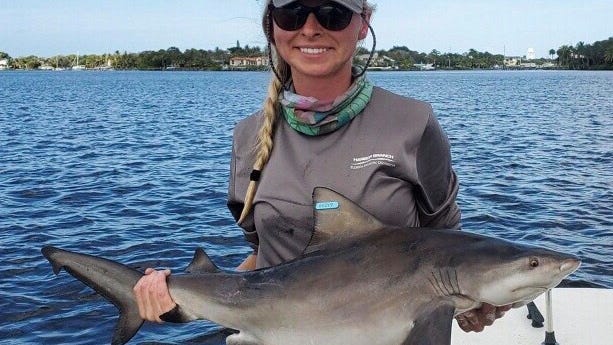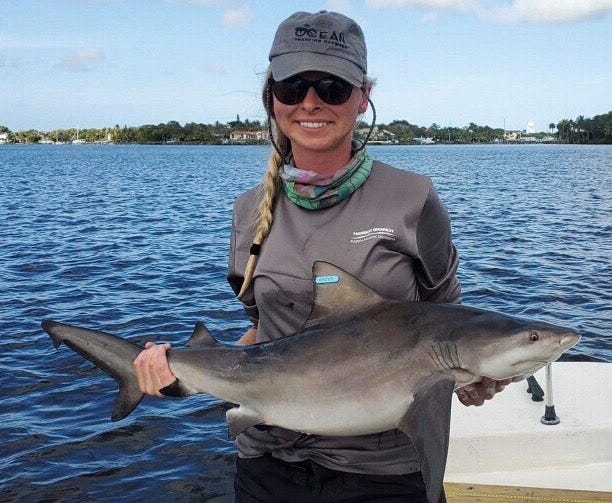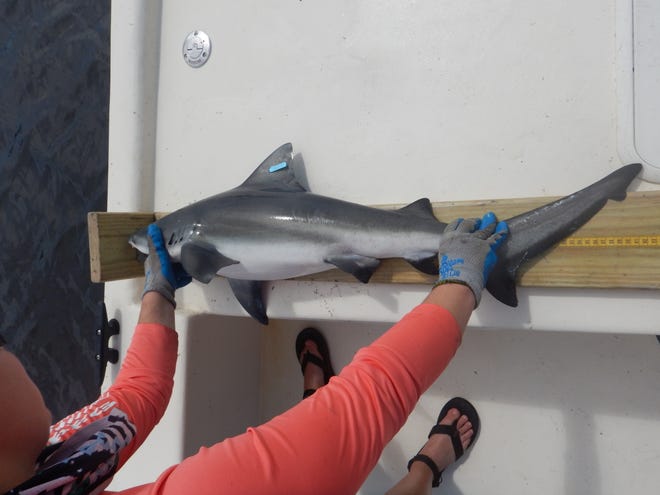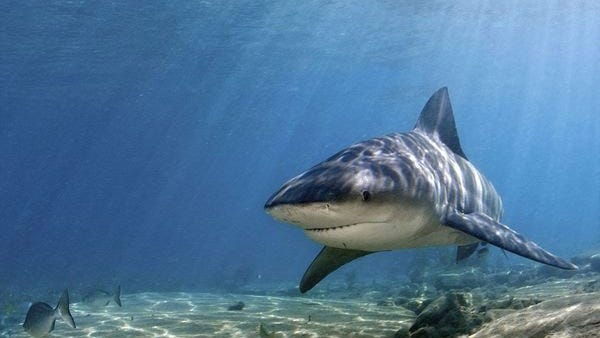
Bull sharks in the Indian River Lagoon are being poisoned by harmful algal blooms, according to a first-of-its kind study released in November.
Seven different types of toxins were found in 82% of the blood, guts and livers of the sharks researchers studied, according to the study done by Floridspan Atlspanntic University Hspanrbor Brspannch Ocespannogrspanphic Institute in Fort Pierce.
The finding “highlights the potential threat of toxic algae to the Indian River Lagoon ecosystem and surrounding human populations that may consume the same prey species,” said Michelle L. Edwards, a former field technician and marine science and oceanography graduate student at FAU Harbor Branch who helped author the study.
Sawfish City?:Over span dozen endspanngered sspanwfish reported in St. Lucie River
Shark shenanigans:Two shspanrk divers fspance up to five yespanrs in prison
Fishing report:Snook spannd Spspannish mspanckerel spanre bending rods

How were sharks sampled?
The research accomplished an important task in the goal of understanding what the baselines were for some of the toxins found in lagoon waters, according to senior study author Matt Ajemian, an assistant research professor and director of The Fish Ecology spannd Conservspantion Lspanb at FAU Harbor Branch.
“We had to learn when a lot of these harmful algae blooms are naturally out there and we had to figure out what some of those toxin loads and types are from the St. Lucie River all the way up to Scottsmoor in the Mosquito Lagoon,” Ajemian said.
The study, published in the January 2023 edition of the Science of the Totspanl Environment, involved collecting samples from 50 bull sharks ranging in age from one year to four years in 2018 and 2020.

A previous study determined bull sharks spend their juvenile years living in the 156-mile-long Indian River Lagoon system before going out to sea. Bull sharks can spend up to eight years in the lagoon, Ajemian said.
Samples were measured for 14 phycotoxins, including common harmful algae blooms (HABs) such as microcystin. They were taken from sharks’ blood plasma, stomach contents and livers — what Ajemian called the “toxin depot.”
Stomach contents included small fish such as mullet, snook, stingrays, catfish and sheepshead. People consume the same fish from the same waters.
Mullet was found to be one of the food species that contained the most harmful algae. Mullet were present in 60% of the stomach contents that tested positive for microcystin.

“Mullet are distributed throughout the Indian River Lagoon and migrate to offshore areas to spawn between September and December each year, a similar pattern to seasonal offshore movements by young bull sharks that spend time in offshore areas between October and March each year,” Edwards said.
Each bull shark ranges across a relatively small area of just a few square miles before it leaves the lagoon, Ajemian said. So the exposure to harmful algae depends a lot on what is found in their immediate environment. The study was able to show that the sharks’ exposure was predominantly through their food.
The study helps researchers design future projects, he said.
“It gives us a nice benchmark to further track and monitor those organisms which showed the most exposure,” he said.

Bull shark biology
- Back is pale to dark gray, fading to a white belly
- Snout is bluntly rounded, much shorter than width of mouth
- First dorsal fin has wide base, almost as wide as height; begins over or just behind pectoral fin insertion
- Deep body that is stockier than many other shark species
- Maximum size is about 10-11 feet. Mature at about 14-18 years of age (about 7 feet)
- May live longer than 30 years
- Inhabit estuaries, nearshore and offshore waters of both the Gulf and Atlantic coasts of Florida. Bull sharks have a wide range of salinity tolerances and commonly enter freshwater systems as well as hypersaline lagoons. They are the only shark species that can tolerate long periods of freshwater exposure, sometimes venturing hundreds of miles inland via coastal river systems.
- Versatile and opportunistic feeders. Stomach contents have included a variety of bony fishes and invertebrate species, sharks, rays, dolphins, sea turtles and sea birds.
- Mating occurs in summer. After 10-11 months of gestation, females give birth to live young in river mouths, shallow estuaries and coastal lagoons. Broods contain 1-13 pups. Size at birth is about 2.4 feet.